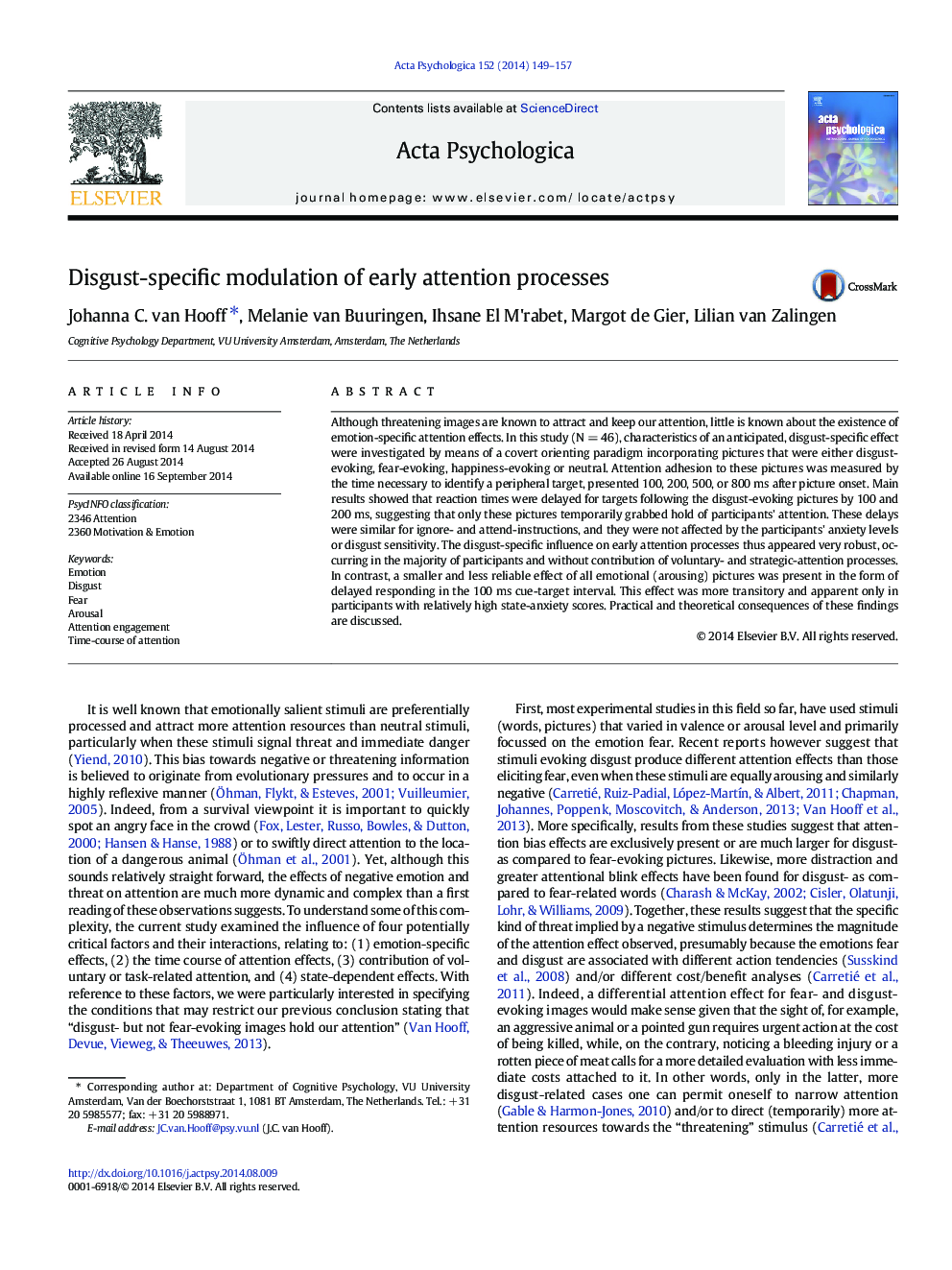| Article ID | Journal | Published Year | Pages | File Type |
|---|---|---|---|---|
| 919795 | Acta Psychologica | 2014 | 9 Pages |
•We compared attention engagement effects for disgust- and fear-evoking pictures.•Disgust-evoking images delayed target identification in a 100 to 200 ms time window.•Disgust-specific attention bias occurred without contribution of voluntary attention.•Disgusting images may attract extra attention resources to aid detailed examination.
Although threatening images are known to attract and keep our attention, little is known about the existence of emotion-specific attention effects. In this study (N = 46), characteristics of an anticipated, disgust-specific effect were investigated by means of a covert orienting paradigm incorporating pictures that were either disgust-evoking, fear-evoking, happiness-evoking or neutral. Attention adhesion to these pictures was measured by the time necessary to identify a peripheral target, presented 100, 200, 500, or 800 ms after picture onset. Main results showed that reaction times were delayed for targets following the disgust-evoking pictures by 100 and 200 ms, suggesting that only these pictures temporarily grabbed hold of participants' attention. These delays were similar for ignore- and attend-instructions, and they were not affected by the participants' anxiety levels or disgust sensitivity. The disgust-specific influence on early attention processes thus appeared very robust, occurring in the majority of participants and without contribution of voluntary- and strategic-attention processes. In contrast, a smaller and less reliable effect of all emotional (arousing) pictures was present in the form of delayed responding in the 100 ms cue-target interval. This effect was more transitory and apparent only in participants with relatively high state-anxiety scores. Practical and theoretical consequences of these findings are discussed.
